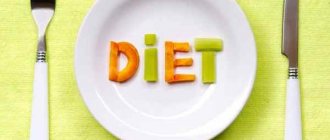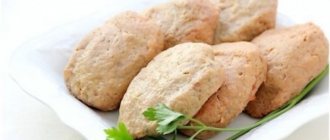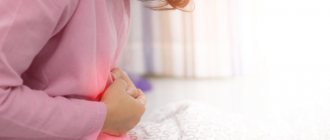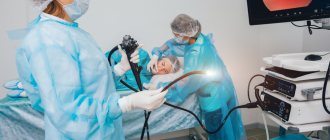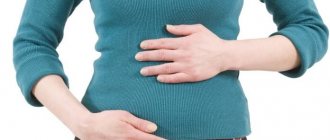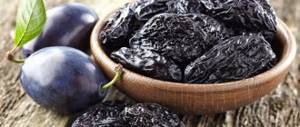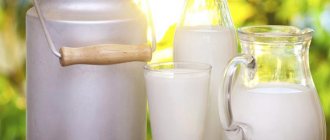General rules
Intestinal microbiocenosis homeostasis and performs protective, metabolic and immune-inducing functions. Disturbances in intestinal microbiocenosis are caused by many factors, primarily gastrointestinal diseases, nutritional patterns, hormonal, antibacterial, radiation therapy, allergies, age, immune status, and even the ecology of human habitat. Changes in the composition of normal microflora are called dysbiosis .
At the same time, it is important to understand that intestinal dysbiosis is always a secondary condition and, when treating it, it is necessary to look for the root cause. Dysbacteriosis in adults and children occurs with a significant change in the qualitative/quantitative composition of the intestinal microflora in the direction of colonization of the intestine with opportunistic microflora (opportunistic enterobacteria ): Proteus , Klebsiella , Citrobacter , yeast-like fungi , with the potential development of metabolic disorders and gastrointestinal disorders, a decrease immune status.
Correction of intestinal dysbiosis is carried out by:
- treatment of the underlying disease that caused dysbacteriosis;
- restoration of impaired intestinal functions;
- direct impact on the disturbed intestinal microflora through the use of probiotics /prebiotics that help normalize the qualitative and quantitative composition of the microflora.
The diet for intestinal dysbiosis should correspond to the therapeutic diets indicated for diseases that caused the development of dysbiosis. If the root cause of dysbiosis is other factors (after antibiotics , allergies, taking hormonal drugs, laxatives, and so on), they must be eliminated. Antibiotic-associated dysbiosis is especially common, which manifests itself several days after taking them. In most mild cases of dysbiosis, the microflora recovers on its own and there is no need for special treatment. However, in some cases, with long-term use of antibiotics, dysbiosis is caused by the activation of a toxigenic strain of opportunistic enterobacteria - Clostridium difficile with the development of pseudomembranous colitis and requires special nutrition and treatment.
The diet of patients with manifestations of dysbiosis should be physiologically complete in terms of the content of food nutrients and calorie content. At the same time, products that have an aggressive effect on the intestinal autoflora are excluded/limited in the diet - canned fish and meat, vermicelli and pasta made from soft flour, semi-finished products from meat, fish, pork, lamb, offal (liver, brains, kidneys), legumes, refractory animal fats, sweet yoghurts, condensed and whole milk, sweets, canned vegetables and fruits, lemonade, chocolate, ice cream. It is recommended to include in the diet (in the absence of contraindications) “prebiotic” dishes and products that stimulate the growth of the constantly present intestinal microflora, as well as foods rich in dietary fiber: products made from wheat, buckwheat, rye, millet, corn, lentils, a number of vegetables - carrots, zucchini, cabbage, Jerusalem artichoke, pumpkin, artichoke, fresh fruit, non-canned fruit and vegetable juices.
It is the antibacterial properties of products of plant origin that stimulate immunobiological reactions in the body and inactivate bacterial exotoxins . It is recommended to include lean meat and fish, nuts, vegetable fats, and fermented milk products in the diet. In diet therapy for patients with dysbacteriosis, it is recommended to use mare's (cow's) koumiss. Its inclusion in the diet reduces the number of putrefactive and spore-bearing anaerobic bacteria and improves the biological properties of physiologically normal intestinal microflora. Food should be as varied as possible. To restore the endogenous biorhythm of digestion, it is recommended to eat at the same hours.
Treatment and diet for dysbiosis are largely determined by the type of intestinal dyspepsia . With fermentative dyspepsia, fermentation of sugars occurs with the formation of gases, water and acetic acid . Fermentative dyspepsia is caused by the predominance in the diet of foods containing easily digestible carbohydrates, which help suppress the growth and reproduction of normal intestinal flora and stimulate the growth of aerobic microorganisms. It manifests itself as moderate diarrhea, bloating, rumbling, discharge of foul-smelling gases, loss of appetite, and fatigue.
In order to reduce fermentation, diet correction is necessary. To do this in the diet:
- Reduce the carbohydrate content to 200 g - exclude mashed potatoes, white cereals, sweet fruits, dried fruits, starch jelly, baked goods, sweets (jam, honey, candies, jam).
- Avoid foods that contribute to gas formation (legumes, bananas, sweet apples, grapes, cabbage, cucumbers, milk, oats, carbonated drinks).
- Limit foods high in dietary fiber - legumes, cabbage, baked goods with bran, nuts, dried fruits, raw fruits/vegetables. This restriction allows you to reduce the speed at which food moves through the intestines.
- Avoid products that contain a lot of essential oils (radishes, turnips, garlic, sorrel, onions, mushrooms, spinach).
- Increase protein consumption to 120 g by introducing protein omelettes, boiled meat/fish, oatmeal and buckwheat porridge into the diet.
When putrefactive dyspepsia predominates flatulence is not so pronounced, the stool is mushy/liquid with a putrid odor, spasms and pain in the rectum, symptoms of intoxication ( headache , weakness).
Putrefactive dyspepsia develops with a significant predominance of foods containing protein in the diet, which promotes the growth of microflora in the intestine that causes putrefactive processes. At the same time, hydrogen sulfide , indole , methane and methyl mercaptan , which cause frequent bowel movements and irritate the intestinal mucosa.
In order to suppress putrefactive processes, it is recommended to adjust the diet:
- Fast for 1-2 days and drink rosehip, chamomile and tea.
- In the diet, the consumption of proteins is limited to 50 g by reducing the consumption of meat, legumes, fish, cottage cheese, nuts, cheese, eggs, cereals, and fats to 30 g. At the same time, the fat content in the diet increases to 400-450 g, in including easily digestible carbohydrates.
- The content of foods rich in dietary fiber - vegetables - increases. First, boiled and then raw vegetables are introduced into the diet. Vegetarian days are recommended.
- The diet must contain fermented milk products containing bifidogenic factors - kefir, yogurt, fermented baked milk, acidophilus (150 ml 4 times a day).
prebiotics in the diet , foods that enhance peristalsis and limiting foods that delay bowel movements. The diet includes products:
- Containing dietary fiber - wholemeal bread, bran, dried fruits, legumes, nuts, raw vegetables, cereals from various cereals.
- Containing sugar - cane sugar, honey, jam, syrups, sweet dishes.
- Containing salt - salted vegetables, fish, canned snack foods.
- Contents of organic acids - pickled/pickled vegetables, fruit drinks, fermented milk drinks, sour fruits and juices from them.
- Carbonated drinks.
- Meat containing a lot of connective tissue.
- Containing fats consumed in large quantities on an empty stomach (sour cream and cream), egg yolks.
To stimulate the intestines (in the absence of contraindications), it is recommended to eat cold dishes on an empty stomach or for lunch - beetroot soup, okroshka, jellied dishes, ice cream, chilled drinks.
At the same time, foods and dishes that delay bowel emptying are excluded from the diet - pasta, hot dishes, jelly, black coffee, chocolate, strong tea, red wine, mucous soups, pomegranate, pears, cocoa.
What is dysbiosis?
Intestinal dysbiosis is a violation of the ratio and composition of intestinal microflora. Beneficial microorganisms that populate the intestines contribute to the absorption of food, the synthesis of certain vitamins and the absorption of microelements. In the large intestine of an adult, there are about 500 species of such bacteria.
The optimal ratio, individual for each person, contributes to normal intestinal function and the removal of toxic and other harmful substances from the body. Beneficial microorganisms include bifidobacteria and lactobacilli, as well as bacteroides.
With the mass death of representatives of this flora, there is an active proliferation of opportunistic microorganisms, which are also present in the human intestine. The predominance of pathogenic microflora over beneficial microflora leads to a weakening of the physiological functions of the intestine, decreased immunity, allergies and gastrointestinal disorders.
Factors in the development of dysbiosis
Among the factors that provoke an imbalance of intestinal microflora are:
- therapy with antibacterial drugs;
- poor nutrition;
- stress, psycho-emotional tension;
- diseases of the digestive system;
- surgical interventions;
- allergies;
- helminthic infestations;
- hormonal and anti-inflammatory therapy;
- intestinal infections;
- viral pathologies.
Signs of dysbiosis
Manifestations of dysbacteriosis depend on the stage of the disease:
- Stage I of dysbacteriosis is characterized by a slight quantitative change in beneficial microflora. Most often, this condition is caused by poor nutrition and is often observed after antibiotics. During this period, the patient notes discomfort and rumbling in the abdomen.
- Stage II is manifested by decreased appetite, gas formation and a metallic taste in the mouth. Intestinal disorders such as constipation and diarrhea are often observed at this stage. It is also possible to develop a skin rash that cannot be treated locally.
- At stage III of dysbiosis, inflammation develops in the large intestine and pain appears. The signs that are noted at stage II become pronounced. There are elements of undigested food in the stool.
- Stage IV is diagnosed when pathogenic microflora has completely colonized the human intestine. Useful microelements are not absorbed, which leads to the development of anemia and vitamin deficiency. The pathology is manifested by weakness, depression, and sleep disturbances. During this period, a person rapidly develops inflammatory and infectious intestinal diseases.
Another article on this topic: How to reduce acidity in the stomach? Preparations to reduce acidity at home
Authorized Products
The basis of the diet for intestinal dysbiosis is pureed porridge made from buckwheat, oatmeal and white rice with the addition of a small amount of butter. It is allowed to consume 150 g of dried white bread or crackers. Soups are prepared with low-fat fish/meat broth, adding pureed meat, cereals, meatballs, egg flakes and some vegetables. Meat products in the diet include lean beef, veal, rabbit or chicken, which are served boiled. Fish is allowed in “white” low-fat varieties, which is steamed or boiled.
The use of various fermented milk products (kefir, fermented baked milk, kumiss, acidophilus milk) is indicated. It is allowed to include astringent foods and dishes in the diet: jelly from blueberries, sloe, rowan, quince, dogwood, persimmon, pear, bird cherry and fruit drinks made from them, as well as raw pureed apples or applesauce. Herbal teas, strong green and black tea, rosehip decoction, infusion of dried dogwood, bird cherry, blueberry, and non-carbonated mineral water are allowed as drinks.
Table of permitted products
| Proteins, g | Fats, g | Carbohydrates, g | Calories, kcal | |
Vegetables and greens | ||||
| zucchini | 0,6 | 0,3 | 4,6 | 24 |
| cabbage | 1,8 | 0,1 | 4,7 | 27 |
| sauerkraut | 1,8 | 0,1 | 4,4 | 19 |
| cauliflower | 2,5 | 0,3 | 5,4 | 30 |
| carrot | 1,3 | 0,1 | 6,9 | 32 |
| cucumbers | 0,8 | 0,1 | 2,8 | 15 |
| beet | 1,5 | 0,1 | 8,8 | 40 |
| tomatoes | 0,6 | 0,2 | 4,2 | 20 |
| pumpkin | 1,3 | 0,3 | 7,7 | 28 |
Fruits | ||||
| apricots | 0,9 | 0,1 | 10,8 | 41 |
| watermelon | 0,6 | 0,1 | 5,8 | 25 |
| melon | 0,6 | 0,3 | 7,4 | 33 |
| nectarine | 0,9 | 0,2 | 11,8 | 48 |
| peaches | 0,9 | 0,1 | 11,3 | 46 |
| plums | 0,8 | 0,3 | 9,6 | 42 |
| apples | 0,4 | 0,4 | 9,8 | 47 |
Nuts and dried fruits | ||||
| dried figs | 3,1 | 0,8 | 57,9 | 257 |
| dried apricots | 5,2 | 0,3 | 51,0 | 215 |
| dried apricots | 5,0 | 0,4 | 50,6 | 213 |
Cereals and porridges | ||||
| buckwheat (kernel) | 12,6 | 3,3 | 62,1 | 313 |
| oat groats | 12,3 | 6,1 | 59,5 | 342 |
| corn grits | 8,3 | 1,2 | 75,0 | 337 |
| pearl barley | 9,3 | 1,1 | 73,7 | 320 |
| wheat bran | 15,1 | 3,8 | 53,6 | 296 |
| millet cereal | 11,5 | 3,3 | 69,3 | 348 |
| barley grits | 10,4 | 1,3 | 66,3 | 324 |
Bakery products | ||||
| oatmeal bread | 10,1 | 5,4 | 49,0 | 289 |
| Rye bread | 6,6 | 1,2 | 34,2 | 165 |
| bran bread | 7,5 | 1,3 | 45,2 | 227 |
| doctor's bread | 8,2 | 2,6 | 46,3 | 242 |
| whole grain bread | 10,1 | 2,3 | 57,1 | 295 |
Confectionery | ||||
| jam | 0,3 | 0,2 | 63,0 | 263 |
| jelly | 2,7 | 0,0 | 17,9 | 79 |
| marshmallows | 0,8 | 0,0 | 78,5 | 304 |
| milk candies | 2,7 | 4,3 | 82,3 | 364 |
| fondant candies | 2,2 | 4,6 | 83,6 | 369 |
| fruit and berry marmalade | 0,4 | 0,0 | 76,6 | 293 |
| paste | 0,5 | 0,0 | 80,8 | 310 |
| oatmeal cookies | 6,5 | 14,4 | 71,8 | 437 |
Raw materials and seasonings | ||||
| sugar | 0,0 | 0,0 | 99,7 | 398 |
| chicory | 1,7 | 0,2 | 4,1 | 21 |
Dairy | ||||
| kefir | 3,4 | 2,0 | 4,7 | 51 |
| sour cream 10% (low-fat) | 3,0 | 10,0 | 2,9 | 115 |
| curdled milk | 2,9 | 2,5 | 4,1 | 53 |
| kumiss | 3,0 | 0,1 | 6,3 | 41 |
| acidophilus | 2,8 | 3,2 | 3,8 | 57 |
| yogurt | 4,3 | 2,0 | 6,2 | 60 |
Cheeses and cottage cheese | ||||
| cottage cheese | 17,2 | 5,0 | 1,8 | 121 |
Meat products | ||||
| beef | 18,9 | 19,4 | 0,0 | 187 |
| beef tongue | 13,6 | 12,1 | 0,0 | 163 |
| veal | 19,7 | 1,2 | 0,0 | 90 |
| rabbit | 21,0 | 8,0 | 0,0 | 156 |
Bird | ||||
| chicken | 16,0 | 14,0 | 0,0 | 190 |
| turkey | 19,2 | 0,7 | 0,0 | 84 |
Eggs | ||||
| chicken eggs | 12,7 | 10,9 | 0,7 | 157 |
Fish and seafood | ||||
| herring | 16,3 | 10,7 | — | 161 |
Oils and fats | ||||
| butter | 0,5 | 82,5 | 0,8 | 748 |
| corn oil | 0,0 | 99,9 | 0,0 | 899 |
| olive oil | 0,0 | 99,8 | 0,0 | 898 |
| sunflower oil | 0,0 | 99,9 | 0,0 | 899 |
Non-alcoholic drinks | ||||
| mineral water | 0,0 | 0,0 | 0,0 | — |
Juices and compotes | ||||
| apricot juice | 0,9 | 0,1 | 9,0 | 38 |
| carrot juice | 1,1 | 0,1 | 6,4 | 28 |
| plum juice | 0,8 | 0,0 | 9,6 | 39 |
| tomato juice | 1,1 | 0,2 | 3,8 | 21 |
| pumpkin juice | 0,0 | 0,0 | 9,0 | 38 |
| rose hip juice | 0,1 | 0,0 | 17,6 | 70 |
| * data is per 100 g of product | ||||
How to eat
Nutritionists advise eating according to a schedule. Eat little by little, with a break of 3-4 hours. Not everyone will be able to withstand such a regime, but effort is necessary. It is necessary to eat heated food several times a day; this normalizes the process of heat accumulation in the large intestine.
To quote Joe Weider, through whose hands many athletes have passed, he recommends listening to your stomach: you shouldn’t eat solely for the reason of devoting strength to training. Try to eat when you feel hungry.
Calorie content of the daily diet is calculated using standard formulas. The minimum daily metabolic rate is multiplied by the coefficient of the type of activity (depending on the profession). You should not go below the figure obtained from the calculations.
The diet for dysbiosis needs to be checked. Weigh yourself regularly. With stable weight loss, menu adjustments are required. The calorie content of meals per day is calculated based on a person’s lifestyle. Moreover, the lion's share occurs before lunch. Taking carbohydrates in the morning is the right decision.
Have dinner 2 hours before bedtime. You can't eat carbohydrates. Athletic people suffer from gastrointestinal problems less often. Therefore, you need to imitate them in your lifestyle, and digestive difficulties will be avoided.
Excess carbohydrates at night are usually deposited on the stomach. This will cause more harm than eating fats, which, due to a lack of enzymes, will not be absorbed. Excess carbohydrates are absorbed into the blood and, under the influence of insulin, are stored as a layer of fat.
Fully or partially limited products
The diet for dysbacteriosis excludes foods that stimulate the secretion of gastric juice - hot seasonings and spices, smoked meats, canned vegetables containing vinegar, any dishes in a marinade. Fatty, rich broths and first courses based on them are prohibited. Mushrooms and seafood, animal and confectionery fats, fatty meats and fish, sausages and various meat delicacies, offal (liver, brains, kidneys), fresh bread from yeast dough and pastries, sour berries and fruits, sauerkraut, legumes, fatty foods are excluded. cream, sour cream and cheese.
Porridges made from coarse cereals (pearl barley, millet, barley) and legumes, which are poorly digested in the gastrointestinal tract and cause bloating, are not recommended. It is not allowed to include jam, dried fruits, honey, sweet yoghurts, condensed and whole milk, whole grain bread with the addition of cereals and seeds, sweets, lemonade, chocolate, and ice cream in the diet. Sugar is allowed in limited quantities (50 g/day).
Table of prohibited products
| Proteins, g | Fats, g | Carbohydrates, g | Calories, kcal | |
Vegetables and greens | ||||
| potato | 2,0 | 0,4 | 18,1 | 80 |
| radish | 1,2 | 0,1 | 3,4 | 19 |
| white radish | 1,4 | 0,0 | 4,1 | 21 |
| turnip | 1,5 | 0,1 | 6,2 | 30 |
| horseradish | 3,2 | 0,4 | 10,5 | 56 |
| garlic | 6,5 | 0,5 | 29,9 | 143 |
Fruits | ||||
| quince | 0,6 | 0,5 | 9,8 | 40 |
Berries | ||||
| blueberry | 1,1 | 0,4 | 7,6 | 44 |
Mushrooms | ||||
| mushrooms | 3,5 | 2,0 | 2,5 | 30 |
Cereals and porridges | ||||
| semolina | 10,3 | 1,0 | 73,3 | 328 |
Flour and pasta | ||||
| pasta | 10,4 | 1,1 | 69,7 | 337 |
| noodles | 12,0 | 3,7 | 60,1 | 322 |
Bakery products | ||||
| wheat bread | 8,1 | 1,0 | 48,8 | 242 |
Confectionery | ||||
| pastry cream | 0,2 | 26,0 | 16,5 | 300 |
Chocolate | ||||
| chocolate | 5,4 | 35,3 | 56,5 | 544 |
Raw materials and seasonings | ||||
| mustard | 5,7 | 6,4 | 22,0 | 162 |
| mayonnaise | 2,4 | 67,0 | 3,9 | 627 |
Dairy | ||||
| milk | 3,2 | 3,6 | 4,8 | 64 |
| condensed milk | 7,2 | 8,5 | 56,0 | 320 |
| cream 35% (fat) | 2,5 | 35,0 | 3,0 | 337 |
| sour cream 25% (classic) | 2,6 | 25,0 | 2,5 | 248 |
Meat products | ||||
| fatty pork | 11,4 | 49,3 | 0,0 | 489 |
| pork liver | 18,8 | 3,6 | 0,0 | 108 |
| pork tongue | 14,2 | 16,8 | 0,0 | 208 |
| pork kidneys | 13,0 | 3,1 | 0,0 | 80 |
| pork heart | 15,1 | 3,2 | 0,0 | 89 |
| salo | 2,4 | 89,0 | 0,0 | 797 |
| beef brains | 9,5 | 9,5 | 0,0 | 124 |
| bacon | 23,0 | 45,0 | 0,0 | 500 |
| ham | 22,6 | 20,9 | 0,0 | 279 |
| beef stew | 14,1 | 17,4 | 0,0 | 214 |
| pork stew | 13,0 | 35,0 | 0,0 | 367 |
Sausages | ||||
| smoked sausage | 16,2 | 44,6 | 0,0 | 466 |
| dry-cured sausage | 24,1 | 38,3 | 1,0 | 455 |
Bird | ||||
| smoked chicken | 27,5 | 8,2 | 0,0 | 184 |
| duck | 16,5 | 61,2 | 0,0 | 346 |
| smoked duck | 19,0 | 28,4 | 0,0 | 337 |
| goose | 16,1 | 33,3 | 0,0 | 364 |
Fish and seafood | ||||
| fried fish | 19,5 | 11,7 | 6,2 | 206 |
| smoked fish | 26,8 | 9,9 | 0,0 | 196 |
| marinated fish | 1,7 | 3,0 | 11,4 | 82 |
| pink salmon | 20,5 | 6,5 | 0,0 | 142 |
| seafood | 15,5 | 1,0 | 0,1 | 85 |
| canned fish | 17,5 | 2,0 | 0,0 | 88 |
| salmon | 21,6 | 6,0 | — | 140 |
| hot smoked mackerel | 22,1 | 23,8 | 4,1 | 317 |
| trout | 19,2 | 2,1 | — | 97 |
Oils and fats | ||||
| animal fat | 0,0 | 99,7 | 0,0 | 897 |
| cooking fat | 0,0 | 99,7 | 0,0 | 897 |
Alcoholic drinks | ||||
| beer | 0,3 | 0,0 | 4,6 | 42 |
Non-alcoholic drinks | ||||
| cola | 0,0 | 0,0 | 10,4 | 42 |
| instant coffee dry | 15,0 | 3,5 | 0,0 | 94 |
| lemonade | 0,0 | 0,0 | 6,4 | 26 |
| black tea | 20,0 | 5,1 | 6,9 | 152 |
| energy drink | 0,0 | 0,0 | 11,3 | 45 |
| * data is per 100 g of product | ||||
Possible complications
Dysbacteriosis causes a number of complications.
- Hypovolemic shock. Significant dehydration of the body leads to hemodynamic disturbances and loss of blood volume. The person becomes lethargic, the skin and visible mucous membranes are dry, the skin fold takes a long time to straighten out, the pressure drops, the pulse and breathing become more frequent.
- Decreased immunity, immunodeficiency. Threatens the addition of secondary infections, exacerbation of chronic diseases in the anamnesis.
- Hypo- or vitamin deficiency.
- Chronic gastroenterocolitis, peptic ulcer, gastritis, pancreatitis.
Dysbacteriosis occurs during the treatment of various diseases with antibacterial drugs. Proper nutrition is the basis of rational and effective treatment.
The article has been approved
by the editors
For children
The diet for intestinal dysbiosis in children is based on the same principles as in adults, however, it is important to take into account the need of the child’s growing body for macro- and micronutrients. If an infant is breastfed, then it should not be interrupted under any circumstances, since it has a family connection with the child’s tissues and has a positive effect on the state of intestinal microbiocenosis in infants. The composition of the intestinal microflora of such children is characterized by the predominance of bifid flora over aerobic microflora, a low content of putrefactive bacteria and aerobic microflora. And in case of various diseases of a child with disturbances of intestinal biocenosis, under the influence of mother’s milk, the content of intestinal flora quickly normalizes.
The ideal option is if the mother normalizes her microflora even during pregnancy. To do this, during pregnancy it is recommended to take drugs such as Bifiform , Narine-Forte , Hilak-Forte , Normoflorins L and B , Probalance , combining them with the intake of soft sorbents - Zosterin-Ultra and Fervital Extra .
Children who are bottle-fed are recommended to take thick formulas that prevent regurgitation and vomiting - Omneo , Nutrilon-antireflux , Frisov , which can be added at the end of each feeding or fed to the child. Samper bifidus , Omneo , Frisovoy are most suitable , and if you have frequent loose/mushy stools, Nutrilon-antireflux or other low-lactose mixtures are most suitable. It is recommended to introduce vegetable purees, juices, and gluten-free non-dairy cereals into complementary foods.
Children over 3 years of age who eat from a common table should not be prescribed any strictly restrictive diet. In the diet of such children, it is recommended to limit the consumption of spicy and fatty foods and sweets. It is recommended to include vegetable salads with the addition of various vegetable oils and fruits, with the exception of grapes and pears, in your diet every day. Be sure to include at least 0.5 liters of various fermented milk products per day in your child’s diet.
After one year, children are recommended to be given “live” yoghurts and fermented milk products made from whole milk - children’s kefir, whey-based drinks. After 1.5 years, the child can additionally be offered fermented milk products with prebiotics ( lactulose ) and probiotics - yogurt, kefir, yogurt. It is recommended to include dietary bread with the addition of wheat bran and crackers in the diet, while white bread and pasta should be completely excluded. It is recommended to add fiber to porridges and muesli, which are best cooked in water.
During the period of exacerbation, there is no need to force the child to eat meat, which intensifies putrefactive processes. It is better to cook dishes by steaming, boiling or baking. The child's meals should be organized according to a schedule (5-6 times) a day, avoiding overeating. Nutridophilus , Linex , Floraldophilus should be included in the diet , and at the final stage of microflora restoration it is recommended to use Laminolact .
Why is the balance of bacteria in the intestines disrupted?
• cholecystitis, • pancreatitis, • gastritis with low acidity, • peptic ulcer of the stomach and duodenum, • conditions associated with surgery on the gastrointestinal tract, • all types of acute intestinal infections associated with diarrhea and vomiting.
• treatment with antibacterial drugs, • hormonal changes during menopause, pregnancy, • taking oral contraceptives, • severe infections that weaken the immune system, • all types of immunopathies, including HIV infection.
Intestinal dysbiosis in a child can be caused by refusal of breastfeeding.
Mechanism of development of diarrhea
Violation of the ratio of opportunistic and beneficial bacteria in the intestines can cause diarrhea (diarrhea). As a rule, this pathological condition is not an independent disease; it only indicates the presence of a disease. Diarrhea is a signal of the progression of an intestinal disease, accompanied by impaired absorption of water.
In addition, the appearance of diarrhea is often associated with the inability of the intestines to absorb nutrients, as well as with active contractions of its walls (food is poorly digested and not absorbed). Each section of the gastrointestinal tract (gastrointestinal tract) receives additional load, because the previous one did not cope with its functions.
- bloating;
- sharp pain in the abdominal cavity;
- strong feeling of thirst;
- muscle weakness;
- dizziness;
- loose stools;
- dyspnea;
- cold sweat;
- nausea;
- dryness of the mucous membranes of the mouth;
- increased blood pressure;
- strong gas formation;
- decrease in body temperature.
After taking antibiotics
Long-term use of antibacterial drugs destroys pathological bacteria (staphylococci, streptococci, pneumococci), which, when they penetrate the body, cause an inflammatory reaction. Treatment of bacterial diseases without antibiotics is impossible. The medicine does not select and kills all microorganisms, including beneficial bacteria found in the gastrointestinal tract, which are responsible for local immunity.
Dietary rules for the treatment of dysbiosis
- Food should be enriched with fiber and dietary fiber, which relieve symptoms of flatulence and constipation. The diet includes: apples, oranges, tangerines, tomatoes, sauerkraut/raw cabbage, strawberries, dried fruits (prunes, dried apricots), legumes (beans, peas, lentils), rye bread, buckwheat, oatmeal, barley.
- Fruits containing pectins (plums, apricots, red/black currants, peaches, persimmons, bananas, pomegranates, watermelon, grapes, melon) create favorable conditions for the proliferation of beneficial bacteria.
- Fermented milk products include natural yogurt, goat/cow milk, cottage cheese, and fermented baked milk. Kefir helps with dysbiosis. The main thing is to choose homemade products without preservatives or chemical additives.
- Green vegetables (lettuce, parsley, dill) will decorate food and restore health to the body.
- Walnuts and berries are used as additional nutrition for weakened intestines.
- Low-fat varieties of fish (perch, pike perch, cod, tuna) will replenish nutrient reserves.
- Carrot, potato, and zucchini casseroles add variety to the diet.
- Sweet and sour jelly made from berries is allowed for consumption.
- Juices squeezed from blueberries, raspberries, pomegranates, and cranberries saturate the body with vitamins and create pleasant conditions for restoring intestinal microflora.
A child who often suffers from bacterial infections (pneumonia, bronchitis) becomes a victim of dysbiosis - as a “continuation” of antibiotic treatment.
To restore body functions in older children, the rules described above are suitable. Breastfed babies are a special category of risk for the development of dysbiosis due to the immaturity of the body systems. Breastfeeding and introducing complementary foods strictly according to the rules and timing will help prevent and cure the disease.
Treatment
Intestinal dysbiosis requires complex treatment. Sample list:
- Specialized diet.
- Antibacterial drugs or bacteriophages.
- Probiotics, prebiotics.
- Detoxification using sorbents.
- If necessary, rehydrate (replenish fluid loss).
- Vitamins.
- Enzymes.
- Drugs that stimulate the immune system.
Diet is only one component. Intestinal dysbiosis itself is often only a consequence of a certain disease; the root cause will need to be eliminated. An approximate weekly meal plan should include the maximum number of foods described above. Leave low-fat foods for the evening. It is useful to have dinner with cottage cheese and kefir.
